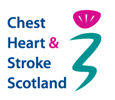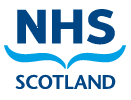Breathing Pattern Disorders (BPD)
What happens when we breathe?
Breathing or Respiration is an autonomic or reflex controlled function. We do not need to think about how we are breathing most of the time - for example when we are at rest or sleeping. It is controlled by the central nervous system of the brain and spinal cord which send and receive messages from different areas of the body depending on the amount of activity and oxygen required for functional tasks.
Occasionally, when required, we can consciously increase or decrease our rate of breathing for a short time e.g. if we yawn, sigh, cough or hold our breath. The body then returns back to its natural breathing cycle. If you have not viewed the Anatomy and Physiology section of RESPe yet, this would be a good point to do this.
Our natural breathing pattern is:
- To inhale and exhale smoothly and gently through the nose.
- Use the main muscle of breathing –the diaphragm.
- To have a relaxed pause at the end of the out breath.
- A healthy adult should breathe around 10 to 14 breaths per minute and can use up to 6 litres of air per minute. This depends in part on your size and fitness.
- This cycle repeats if the body is at rest.




